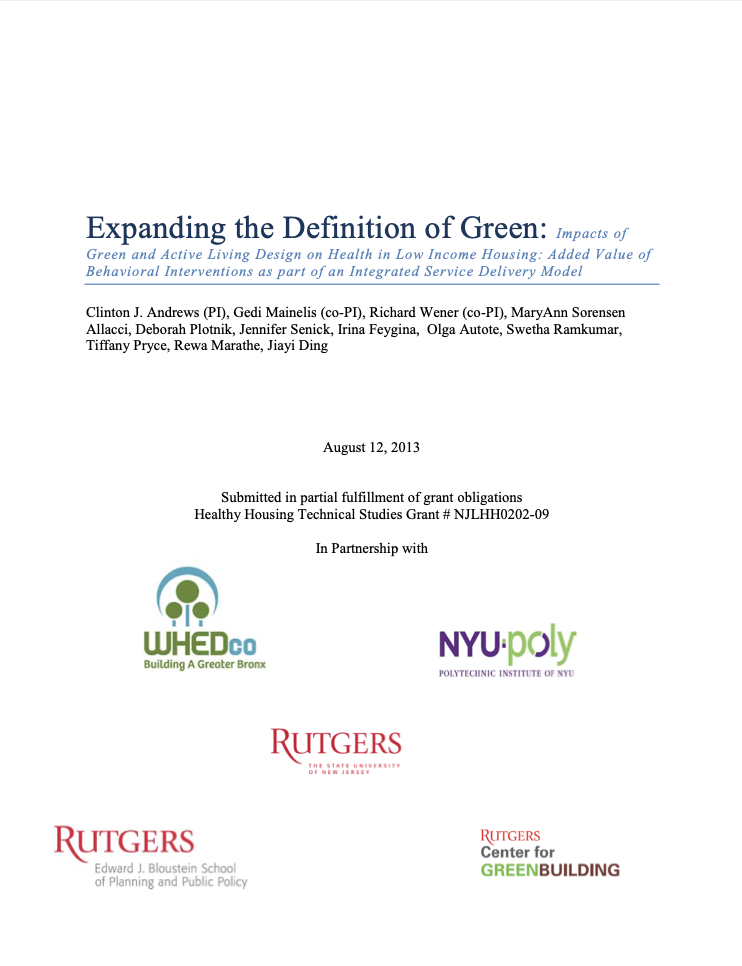The HUD Healthy Homes Technical Studies program funded a 3-year study at an Energy Star rated affordable multi-family residential building in the South Bronx, NY, which was completed in August 2013. The building, completed in 2009, contains 127 apartments on six and seven floors with a total floor area of slightly less than 150,000 square feet. The study used a participatory research design to investigate whether green-building objectives were in conflict with or complementary to health-related objectives for residents. The research design included baseline measurements of resident perceptions and apartment-specific indoor air quality (IAQ) and energy performance, followed by interventions designed to improve outcomes for residents, followed by additional rounds of measurements to determine the effects of the interventions. The number of participants was approximately 1/3 of all apartments (baseline n= 40 shared between control and treatment groups), and the results support several findings, summarized below.
Conflicts between green-building and resident health objectives emerged, some related to the design of the building, and others to its operation and leasing arrangements. The two most important were:
- The building was designed to have low ventilation rates to save energy, but odor problems and poor IAQ sometimes resulted.
- Statistically significantly higher CO2 levels were found in apartments where recent (6-9 months ago) asthma attacks were reported stressing importance of proper ventilation.
- Sending price signals to residents helps them save energy. However, some asthmatic residents may be underutilizing needed air-conditioning equipment because of difficulties in affording the associated high utility bills.
Complementarities between green and healthy also emerged, including the following:
- The rooftop garden helped manage stormwater and urban heat island effects, and it also served as a catalyst for building – level interventions that inspired some residents to grow and eat local vegetables.
- An emphasis by the building management on low VOC materials, finishes and maintenance products provided the platform for programs on improving indoor air quality.
Two interventions had significant effects. Lower airborne particle concentrations were observed in apartments that received IAQ-related interventions, and utility bills dropped in apartments receiving energy-efficiency interventions. Healthy eating and active living interventions resulted in modest changes to self-reported behavior.
Based on this study, HUD should consider the following recommendations:
- Resist the temptation to under-ventilate in order to save energy.
- Treat air conditioning as a necessity not a luxury for asthmatic individuals.
- Expand the use of housing as a platform for social service delivery. Incorporate programming to support long-term initiatives for residents about available low VOC cleaning tools and supplies, healthy eating and active living, and energy conservation. Involve residents in the design of culturally-appropriate behavioral interventions to help transition behavior to more healthful or energy conserving habits.
- Encourage the incorporation of outside authorities and consultants into interventions where needed to offer specialization and preserve privacy.
- Prioritize moisture control and integrated pest management, and develop more cost- efficient means to identifying and managing such problems.
